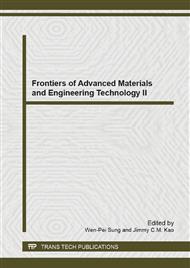p.95
p.99
p.103
p.107
p.111
p.115
p.119
p.123
p.127
Effect of Chemical Composition and Microstructure on Abrasion Resistance of Surfacing Materials
Abstract:
The influence of chemical composition, hardness and microstructure on resistance to abrasive wear of four kinds surfacing materials was studied. According to the results, coarse and massive carbides are not benefit for abrasion resistance, by decreasing continuity of matrix. Tiny and fine dispersed carbides combined with high toughness matrix, despite the relatively low hardness, ensure excellent abrasion resistance. Besides, material with single phase of martensite shows low hardness and low abrasion resistance.
Info:
Periodical:
Pages:
111-114
Citation:
Online since:
April 2014
Authors:
Keywords:
Price:
Сopyright:
© 2014 Trans Tech Publications Ltd. All Rights Reserved
Share:
Citation:


